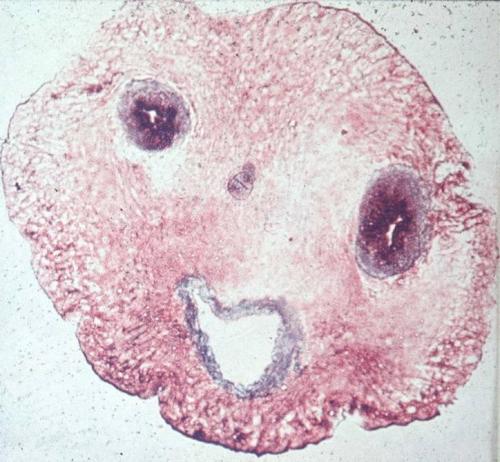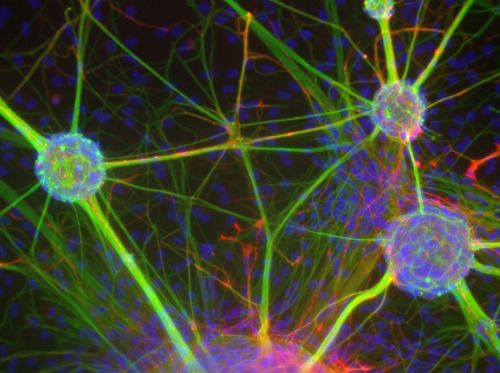Как вы уже поняли, повреждения ДНК - моя любовь. А их роль в процессах старения - одна из интереснейших тем... Поэтому не могу не запостить заметку, прочитанную на http://www.scientificblogging.com/news_releases/did_these_researchers_discover_universal_mechanism_aging
Researchers have discovered that DNA damage decreases a cell's ability to regulate which genes are turned on and off in particular settings. This mechanism, which applies both to fungus and to us, might represent a universal culprit for aging.
"This is the first potentially fundamental, root cause of aging that we've found," says Harvard Medical School professor of pathology David Sinclair. "There may very well be others, but our finding that aging in a simple yeast cell is directly relevant to aging in mammals comes as a surprise."
Their findings appear in the November 28 issue of the journal Cell.
For some time, scientists have know that a group of genes called sirtuins are involved in the aging process. These genes, when stimulated by either the red-wine chemical resveratrol or caloric restriction, appear to have a positive effect on both aging and health.
Nearly a decade ago, Sinclair and colleagues in the Massachusetts Institute of Technology lab of Leonard Guarente found that a particular sirtuin in yeast affected the aging process in two specific ways—it helped regulate gene activity in cells and repair breaks in DNA. As DNA damage accumulated over time, however, the sirtuin became too distracted to properly regulate gene activity, and as a result, characteristics of aging set in.
"For ten years, this entire phenomenon in yeast was considered to be relevant only to yeast," says Sinclair. "But we decided to test of this same process occurs in mammals."
Philipp Oberdoerffer, a postdoctoral scientist in Sinclair's Harvard Medical School lab, used a sophisticated microarray platform to probe the mammalian version of the yeast sirtuin gene in mouse cells. The results in mice corroborated what Sinclair, Guarente, and colleagues had found in yeast ten years earlier.
Oberdoerffer found that a primary function of sirtuin in the mammalian system was to oversee patterns of gene expression (which genes are switch on and which are switch off). While all genes are present in all cells, only a select few need to be active at any given time. If the wrong genes are switched on, this can harm the cell. (In a kidney cell, for example, all liver genes are present, but switched off. If these genes were to become active, that could damage the kidney.) As a protective measure, sirtuins guard genes that should be off and ensure that they remain silent. To do this, they help preserve the molecular packaging—called chromatin—that shrink-wraps these genes tight and keeps them idle.
The problem for the cell, however, is that the sirtuin has another important job. When DNA is damaged by UV light or free radicals, sirtuins act as volunteer emergency responders. They leave their genomic guardian posts and aid the DNA repair mechanism at the site of damage.
During this unguarded interval, the chromatin wrapping may start to unravel, and the genes that are meant to stay silent may in fact come to life.
For the most part, sirtuins are able to return to their post and wrap the genes back in their packaging, before they cause permanent damage. As mice age, however, rates of DNA damage (typically caused by degrading mitochondria) increase. The authors found that this damage pulls sirtuins away from their posts more frequently. As a result, deregulation of gene expression becomes chronic. Chromatin unwraps in places where it shouldn't, as sirtuin guardians work overtime putting out fires around the genome, and the unwrapped genes never return to their silent state.
In fact, many of these haplessly activated genes are directly linked with aging phenotypes. The researchers found that a number of such unregulated mouse genes were persistently active in older mice.
"We then began wondering what would happen if we put more of the sirtuin back into the mice," says Oberdoerffer. "Our hypothesis was that with more sirtuins, DNA repair would be more efficient, and the mouse would maintain a youthful pattern gene expression into old age."
That's precisely what happened. Using a mouse genetically altered to model lymphoma, Oberdoerffer administered extra copies of the sirtuin gene, or fed them the sirtuin activator resveratrol, which in turn extended their mean lifespan by 24 to 46 percent.
"It is remarkable that an aging mechanism found in yeast a decade ago, in which sirtuins redistribute with damage or aging, is also applicable to mammals," says Leonard Guarente, Novartis Professor of Biology at MIT, who is not an author on the paper. "This should lead to new approaches to protect cells against the ravages of aging by finding drugs that can stabilize this redistribution of sirtuins over time."
Both Sinclair and Oberdoerffer agree with Guarente's sentiment that these findings may have therapeutic relevance.
"According to this specific mechanism, while DNA damage exacerbates aging, the actual cause is not the DNA damage itself but the lack of gene regulation that results," says Oberdoerffer. "Lots of research has shown that this particular process of regulating gene activity, otherwise known as epigenetics, can be reversed—unlike actual mutations in DNA. We see here, through a proof-of-principal demonstration, that elements of aging can be reversed."
Recent findings by Chu-Xia Deng of the National Institute of Diabetes, Digestive and Kidney Diseases, has also found that mice that lack sirtuin are susceptible to DNA damage and cancer, reinforcing Sinclair's and Oberdoerffer's data.
02.12.2008
Повреждения ДНК и старение
Подписаться на:
Комментарии к сообщению (Atom)











0 +:
Dí lo que piensas...